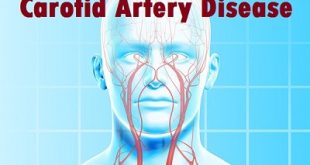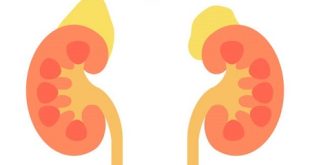Introduction
Childhood obesity is a serious medical condition that affects children and adolescents. Children who are obese are above the normal weight for their age and height.
Childhood obesity is particularly troubling because the extra pounds often start children on the path to health problems that were once considered adult problems — diabetes, high blood pressure and high cholesterol. Many obese children become obese adults, especially if one or both parents are obese. Childhood obesity can also lead to poor self-esteem and depression.
One of the best strategies to reduce childhood obesity is to improve the eating and exercise habits of your entire family. Treating and preventing childhood obesity helps protect your child’s health now and in the future.
What are the causes and risk factors of childhood obesity?
There are many reasons why a child may be obese, including medical or genetic ones. In most cases, though, children are overweight because they eat unhealthful foods and lead a sedentary lifestyle. If you think your child is overweight because of a medical condition, consult your pediatrician who can perform tests to check.
Reasons why more and more children are becoming obese include:
- Behavioral factors: eating bigger portions, eating foods that are calorie-rich but nutrient poor (junk foods), spending lots of time in front of the television or computer and spending too little time doing physical activities
- Environmental factors: easy access to high-calorie junk foods, few opportunities for physical activity, lack of parks and playgrounds in some communities
- Genetic factors: A child is at increased risk for obesity when at least one parent is obese. However, genes do not necessarily mean a child is destined to be overweight—there are several steps a child can take to lower his risk.
- Medications: steroids, some antidepressants and others
- Medical conditions: Genetic syndromes like Prader-Willi, and hormonal conditions like hypothyroidism are among the medical disorders that can cause obesity
What are the Symptoms of Childhood Obesity?
Excess accumulation of body fat is the significant sign of obesity. Obesity is measured in terms of body mass index (BMI). BMI measures the weight of an individual in relation to height. Obesity is defined as the condition when the individual’s BMI is 30 or more than that. Apart from BMI </= 30, some individuals will also show following symptoms:
- Potbelly
- Overeating
- Shortness of breath
Possible Complications
A child who is overweight or obese is more likely to be overweight or obese as an adult. Obese children are now developing health problems that used to be seen only in adults. When these problems begin in childhood, they often become more severe when the child becomes an adult.
Children with obesity are at risk for developing these health problems:
- High blood glucose (sugar) or diabetes.
- High blood pressure (hypertension).
- High blood cholesterol and triglycerides (dyslipidemia or high blood fats).
- Heart attacks due to coronary heart disease, congestive heart failure, and stroke later in life.
- Bone and joint problems — more weight puts pressure on the bones and joints. This can lead to osteoarthritis, a disease that causes joint pain and stiffness.
- Stopping breathing during sleep (sleep apnea). This can cause daytime fatigue or sleepiness, poor attention, and problems at work.
Obese girls are more likely not to have regular menstrual periods.
Obese children often have low self-esteem. They are more likely to be teased or bullied, and they may have a hard time making friends.
How is Childhood Obesity Diagnosed?
The diagnosis of obesity is done by determining the body mass index (BMI) and by doing a blood test. These two topics are discussed briefly:
Body Mass Index:
Obesity is diagnosed by determining the body mass index (BMI) of the child. A body mass index greater than 30 is considered as obesity. The WHO has categorised obesity into different classes based on the BMI value.
|
Body Mass Index (BMI) |
Type |
|
25 -29.9 |
Pre obese |
|
30 – 34.99 |
Obese Class I |
|
35 – 39.99 |
Obese Class II |
|
> 40 |
Obese Class II |
Blood tests
Your child’s doctor might order blood tests if he or she finds that your child is obese. These tests might include:
- A cholesterol test
- A blood sugar test
- Other blood tests to check for hormone imbalances, vitamin D deficiency or other conditions associated with obesity
Some of these tests require that your child not eat or drink anything before the test. Ask if your child needs to fast before a blood test and for how long.
What to do about Treating Childhood Obesity
Treating obesity in children and adolescents differs from treatment in adults. Involving the family in a child’s weight management program is a key element to treatment. As a support system, family is integral in ensuring weight management goals are met.
It is important to talk with your physician about options for treating childhood obesity. The various treatments of obesity in children and adolescents include:
- Diet therapy
- Physical activity
- Behavior Modification
- Surgery
- Medications
Diet Therapy
When treating a child or adolescent affected by obesity, it is often recommended that they have a consultation with a nutritionist that specializes in children’s needs. Nutritionists can best help children understand healthy eating habits and how to implement them in their long-term diet.
In some cases, nutritionists do not always recommend restricting caloric intake for children. Education on how to read food labels, cut back on portions, understand the food pyramid and eat smaller bites at a smaller pace is generally the information given to change a child’s eating habits.
Physical Activity
Another form of treatment of obesity in children is increasing physical activity. Physical activity is an important long-term ingredient for children, as studies indicate that inactivity in childhood has been linked to a sedentary adult lifestyle.
Increasing physical activity can decrease, or at least slow the increase, in fatty tissues in children affected by obesity. The US Surgeon General recommends that children get at least 60 minutes of physical activity each day. Individualized programs are available and possible for those children or adolescents that are not able to meet minimum expectations.
Behavior Modification
Lifestyles and behaviors are established at a young age. It is important for parents and children to remain educated and focused on making long-term healthy lifestyle choices.
There are several ways that children and adolescents can modify their behavior for healthier outcomes, such as: changing eating habits, increasing physical activity, becoming educated about the body and how to nourish it appropriately, engaging in a support group or extracurricular activity and setting realistic weight management goals.
Surgery
While surgery has been performed on adolescents in extreme cases to treat obesity, it is only considered for those with severe medical conditions that can be improved by surgery
Medications
Medication might be prescribed for some adolescents as part of an overall weight-loss plan. The risks of taking prescription medication over the long term are unknown, and medications’ effects on weight loss and weight maintenance for adolescents is still in question.
Prevention of Childhood Obesity
Whether your child is at risk of becoming overweight or is currently at a healthy weight, you can take measures to get or keep things on the right track.
- Limit your child’s consumption of sugar-sweetened beverages or avoid them
- Provide plenty of fruits and vegetables
- Eat meals as a family as often as possible
- Limit eating out, especially at fast-food restaurants, and when you do eat out, teach your child how to make healthier choices
- Adjust portion sizes appropriately for age
- Limit TV and other “screen time” to less than 2 hours a day for children older than 2, and don’t allow television for children younger than 2
- Be sure your child gets enough sleep
Also, be sure your child sees the doctor for well-child checkups at least once a year. During this visit, the doctor measures your child’s height and weight and calculates his or her BMI. An increase in your child’s BMI or in his or her percentile rank over one year is a possible sign that your child is at risk of becoming overweight.
 Diseases Treatments Dictionary This is complete solution to read all diseases treatments Which covers Prevention, Causes, Symptoms, Medical Terms, Drugs, Prescription, Natural Remedies with cures and Treatments. Most of the common diseases were listed in names, split with categories.
Diseases Treatments Dictionary This is complete solution to read all diseases treatments Which covers Prevention, Causes, Symptoms, Medical Terms, Drugs, Prescription, Natural Remedies with cures and Treatments. Most of the common diseases were listed in names, split with categories.








my daughter is obsessed; and she has an unusual sickness like fit or epilepsy. what do I do for her healing? please help me.
Please consult a neurologist for an appropriate diagnosis and treatment.
How to treat an obsessed child that often falls like epilepsy?
Please consult with your doctor to diagnose and treat the problem.